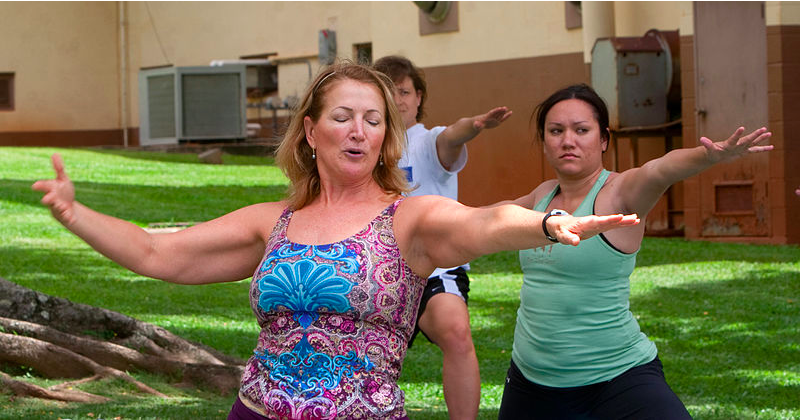|
Jenny Holt, Freelance Writer
As cosmetic surgery becomes more prevalent, it becomes increasingly important to question its role in achieving beauty and health goals. There are some things that only plastic surgery can accomplish. No number of downward dogs will make your nose smaller or correct your crow's feet. But aging gracefully should also be celebrated. It's important to find a balance between achieving your beauty goals and loving yourself for who you are. False Representation? Practitioners of yoga look to their teachers to provide spiritual, mental, and physical guidance. But what if your teacher has augmented their body with plastic surgery? These augmentations can range from cellulite removal to breast implants to butt lifts. Regardless of the type of surgery, however, they all have one thing in common: they seem antithetical to the practice of yoga. The Mind Body Connection Yoga is more than a physical exercise. It has a number of benefits, ranging from relieving anxiety to improving self-confidence. In an interview, Morgan DeYoung, also known as the Southern Yogi, admits that she's considered plastic surgery. Yoga often forces practitioners to confront their darkest emotions and insecurities, but it can also provide them with a fulfilling emotional outlet. According to DeYoung, she decided against rhinoplasty surgery because she feels that her nose represents the journey that she's been on in life. Yoga can help people achieve greater self-knowledge, transforming perceived flaws into a facet of their individual journey. Yoga and Age Yoga may not offer the immediate results of cosmetic surgery, but it provides practitioners with a number of anti-aging benefits. For example, it helps increase flexibility. As bodies age, joints and muscles stiffen and become less pliant. In time, this leads to decreased mobility and other health concerns. When people practice yoga, however, the spine is elongated. The vertebrae are stretched in a healthy and beneficial manner. This enhances nerve conduction and prevents the spinal shortening that comes with age. If you practice yoga regularly, you've probably noticed that it enhances your sense of wellbeing. Yoga focuses on breathing, making each practitioner concentrate on the simple in and out of their breath. In time, the capacity of the lungs increase, and we bring in more of the life force that surrounds us constantly. This provides much needed energy to our cells, giving us the oomph we need to combat aging. Proper breathing technique can also lower blood pressure and improve digestion. Yoga has the power to enhance our strength, balance, flexibility, and overall quality of life. It has the power to feel at peace in our own skin. And if you feel at peace, the desire for cosmetic surgery might just go away.
0 Comments
 laṅghana – लङ्घन / bṛṃhaṇa – बृंहण The effects of asana and pranayama can be classified into two categories, known as langhana, “reducing,” and brumhana, “nourishing.” These concepts are very similar to the Chinese concepts of yin and yang. Langhana means “to fast” or reduce, and is very similar to the concept of yang in traditional Chinese medicine. In reference to asana practice, it refers to the more energizing postures, which stimulate the metabolism and energize the nervous system, and balance tamas. These postures are warming to the body and activating for the mind. Brmhana means “to expand” and is very similar to the concept of yin in traditional Chinese medicine. In reference to asana practice, it refers to the more relaxing postures, which slow down the metabolism, heart rate, respiration rate, relax the nervous system, and balance rajas. These postures are cooling to the body and calming the mind. laṅghana: “to fast, reduce” constrictive, solar/yang, shiva/masculine, exhalation, heating, detoxifying & reducing, vata & pitta qualities, backward bending bṛṃhaṇa: “to expand” expansive, lunar/yin, shakti/feminine, inhalation, cooling, nurturing & tonifying, kapha qualities, forward bending Written by Debby Andersen www.debbyandersen.com  Jenny Holt, Freelance Writer Back in the 1960s, when yoga first hit American shores, the media branded it as a "hippie" thing, connected with the counterculture, rock music, and teenagers. Now it is comfortably entrenched in the mainstream, the yoga industry rakes in $27 billion per year. More people attend classes, buy books, magazines and DVDS, and sport yoga apparel than ever. Along with high-profile gurus, instructors and apparel companies, yoga now has a slew of Instagram stars and influencers. These include teachers and self-styled yoga gurus who demonstrate poses on the Internet. While video instruction has been a regular feature of social media since the advent of the medium, teachers as yoga influencers now have a big say in promoting certain apparel or merchandise brands. Rise in Injuries The New York Times has noticed another social media trend – yoga "show-offs." A recent article examined the proliferation of students practicing too many repetitions of advanced handstands – and photographing them. This trend has sent many people to emergency rooms with wrist sprains, tendonitis, or serious muscle tears. You'd think there's an ongoing competition for the most complicated posture, sexiest yoga pose or the weirdest place you've done yoga after perusing Instagram and Facebook posts. The posts are often posted by students who are proud of what they've accomplished, but photos of some yoga practitioners exhibit more "poseur" than "pose." Yoga isn’t a Competition The purpose of yoga is to help people get fit and healthy and feel balanced on an emotional, mental and spiritual level, like many forms of physical fitness. Yoga is a personal journey and not a competition. There aren't any medals for Best Rishi's Posture or Headstand in the Olympics yet. Maybe we should look at the Instagrammers who give the impression they are only in it for being credited as performance artists who use yoga. Think of it as an alternate use of yoga. Or maybe this Instagram/yoga influencer trend is just that, a trend that will fade away just like shiny cargo pants or shrug sweaters. Social media popularity has nothing do with our worth as a yoga student. We shouldn’t feel the need to be an Instagram star to feel we’ve learned something. Nor should we feel the need to share any photos of our yoga practice with the public at large. We should use social media as a platform to share the positive aspects of yoga, encourage other students and trade tips. Like any other technology, it’s the way you use it that makes the difference. |
Archives
April 2024
|


 RSS Feed
RSS Feed
